Building An Energy-Efficient Home in Whitefish – 9 Key Steps
Building an energy-efficient home in Whitefish, Montana is one of the best ways to live a sustainable lifestyle while taking advantage of all the savings eco-friendly materials and technology offer.
Knowing how to build an energy-efficient home in Montana starts with understanding 9 key steps that we have identified:
- Proper site selection and design
- Energy-efficient appliance installation
- Solar panel installation
- Energy-saving device integration
- Insulation fitting
- Energy-efficient lighting installation
- Insulated door and window installation
- Air sealing
- Energy-efficient construction
In this guide, we’re going to take a deeper look at each of these 9 steps. So that you can leave with all of the expert tips and guidance when considering an energy-efficient home-build.
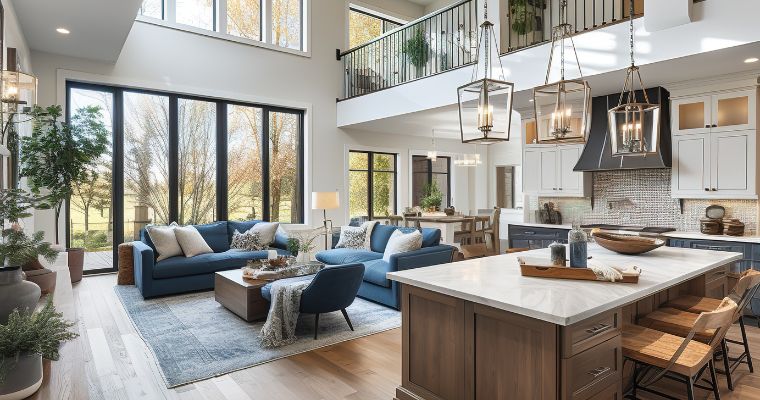
9 Steps to Build an Energy-Efficient Home in Whitefish, Montana
Building an energy-efficient home in Whitefish, Montana, can save you money on your monthly utility bills. It can also increase the value of your home in case you ever choose to sell.
With years of experience building sustainable homes and commercial spaces in the region, we’ve created a list of 9 essential tips. Builders should follow these if they want to construct a green home.
1. Site Selection and Design
Your first step is choosing the right site for your new home.
Look for locations with plenty of natural light and wind protection.
In terms of design, it’s important to have passive solar heating in mind, meaning you position your home in such a way that it captures the optimal amount of sunlight during the winter months while minimizing exposure during the cold winters.
This is especially true in Montana, where seasonal weather can be quite extreme.
2. Install Energy-Efficient Appliances
Appliances are some of the most significant energy consumers in the home. Selecting energy-efficient models should be a priority.
As a rule of thumb, you want to look for appliances with EnergySTAR certifications, including refrigerators, dryers, and washers.
When coupled with energy-saving devices, such as energy monitors and programmable thermostats, you can program your appliances in such a way that offers the most energy-efficient usage.
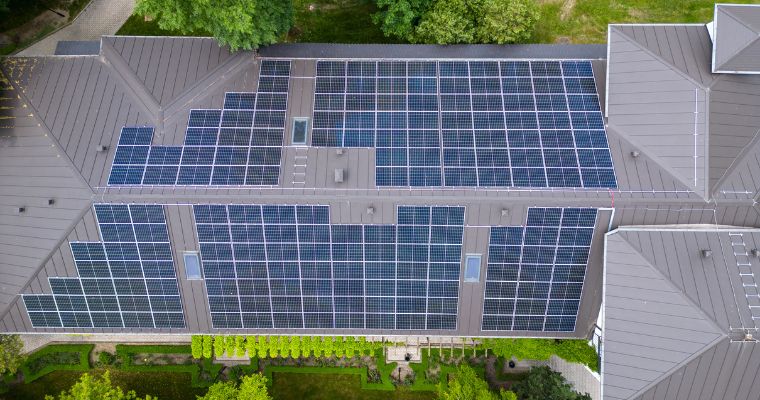
3. Install Solar Panels
Solar panels might seem like a hefty investment, though they can be an excellent addition to building an energy-efficient home in Whitefish, Montana.
Not only can they increase the appraisal value of a home by just over 4%, essentially paying for themselves in the end, but over the course of 25 years, Montana homeowners with solar can save over $15,000.
Plus, solar panels are one of the main contributors to a sustainable energy system. They reduce the reliance on non-renewable power sources, which can lower the overall carbon footprint of a home.
4. Energy-Saving Devices
Incorporating energy-saving devices like smart water heaters, advanced power strips, and programmable thermostats in your home is a great way to ensure you manage your energy consumption more efficiently.
While these devices can often be more expensive than less energy-efficient products, they typically save you plenty of money over the long term.
In fact, an average electric heat pump water heater costs around $700, yet with built-in energy efficiency, you could save over $3,500 over the heater’s lifetime.
5. Fit Insulation
When building green homes, one of the most important aspects is insulation.
Ensure every room in your home has the highest R-value possible as permitted by the thickness of your roof or wall. Energy experts can perform blower door tests to ensure there are no gaps in your insulation.
The more insulation you have, the cooler your home will stay during summer, and the warmer it’ll stay during winter.
Of course, insulation is equally about quality as it is about quantity, which is why it’s important to install high-quality insulation as well.
Invest in higher-grade insulating materials like spray foam, which has a higher R-value compared and lifespan compared to fiberglass insulation, or aerogel, which offers four times the efficiency of fiberglass with an eco-friendly design.
Plus, these kinds of insulating materials aren’t as prone to issues like mold and moisture, offering a more maintenance-free operation.
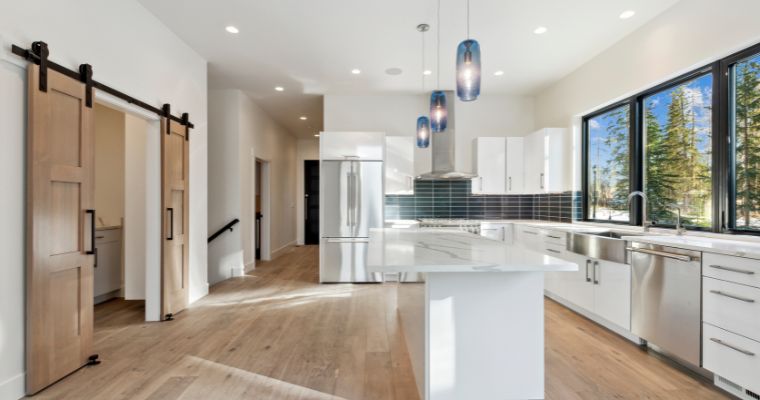
6. Install Energy-Efficient Lighting
The lighting in your home can account for around 6% of your overall energy consumption, and if you’re someone who runs your lights all day or works from home, that percentage could be much greater.
LED lights last ten times longer than your average incandescent light and deliver far greater energy efficiency.
Better yet, installing smart lighting devices with programmed timers or motion-controlled on-and-off switches can keep you from letting your lights run all day and night when you forget to turn them off.
7. Use Highly Insulated Windows and Doors
Two of the major sources of heat and air loss that you may not even realize are your windows and doors.
Not only will investing in highly-insulated doors and thick, double-paned windows save you money in the long run, but the ROI for these investments is unbelievably high.
As for doors, look for those that have high R-values.
When it comes to windows, you can get a little extra bang for your buck with special low-E coating or argon-filled gaps for better internal temperature retention.
8. Air Sealing
With proper air sealing, you can reduce your home’s heating and cooling requirements anywhere from 20% to 50%, and for Whitefish residents dealing with seasonal extremes, this can mean significant savings.
Ensuring your doors and windows are sealed with weatherstripping and caulk, or using spray foam to cover gaps in more considerable areas like recessed lights and chimneys, is a great way to maintain an airtight home.
As a result, you get to enjoy better overall energy efficiency and stable internal temperatures for a more comfortable living experience.
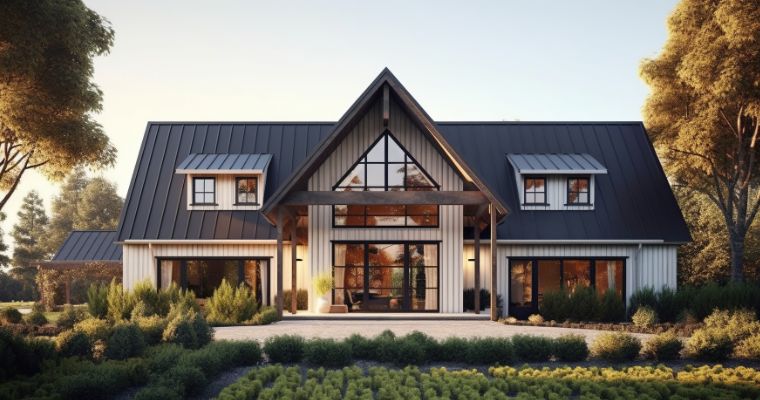
9. Building
Lastly, it’s important to employ the latest construction methods and technologies throughout the construction process, while using sustainable materials like reclaimed wood, low-VOC paints, and recycled steel to minimize waste throughout the process.
Some of our favorite sustainable building materials for Whitefish, MT, homes include adobe bricks and stone, as they’ve been used successfully for many centuries.
If you’ve long had the vision of building an energy-efficient home in Whitefish, Montana, our team at Eco-Residency can chelp.
Get in touch with our team today to discuss your goals.
Why Is It Important to Build an Energy-Efficient Home in Whitefish, Montana?
Whitefish has had a recent shift toward building energy-efficient homes for numerous reasons:
Climate
Winters in Whitefish can be brutal, and temperatures often dip well below freezing.
With energy-efficient construction and a top-tier heating system, you can drastically reduce the amount of energy required to keep your home warm.
The same can be said for optimizing cooling costs in the warmer summers.

Environmental Impact
If you’re constantly looking for ways to reduce your carbon footprint and conserve resources, what better place to start than with your home?
The residential and commercial sectors are responsible for nearly 13% of Montana’s carbon dioxide emissions, and builders that refrain from using sustainable materials forego the resource conservation benefits that can significantly reduce waste.
By implementing the right practices and materials, you can drastically reduce your own carbon footprint and set a standard for the community to follow.
Financial Benefit
As we’ve made clear, energy-efficient homes use less energy for lighting, heating, cooling, and more. In a decade, you can save thousands on energy bills, meaning more savings down the line.
The city of Whitefish released its Climate Action Plan in 2018, outlining rebates and tax credits for added renewable energy systems and sustainable living upgrades.
The goal here was to make sustainable living as accessible as possible for those interested.
Sustainability and Community
The main goal of sustainability advocates is to create a ripple effect. Providing others with the knowledge and resources they need to adopt eco-friendly practices and initiatives in their own lives.
Building an energy-efficient home in Whitefish, Montana, can inspire others to do the same.
Plus, you create a more attractive local real estate market for others interested in the long-term savings and environmental benefits of green living.
Take your first step toward sustainable living with Eco-Residency. Get in touch with us today to learn about how we build homes that balance the best in both economic and environmental benefits.
Examples of Energy-Efficient Homes in Whitefish, Montana
Over the years, we’ve had the privilege of developing some of the most prestigious eco-friendly homes and projects in Whitefish.
Here’s a look at one of our favorite energy-efficient home projects:
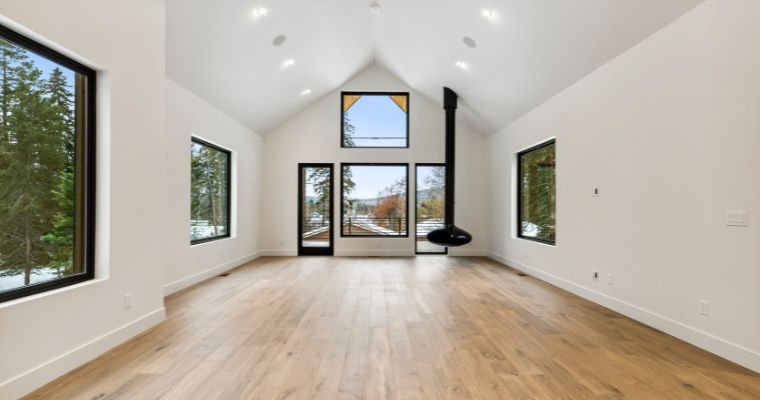
158 Mountain Brook Lane
Our 158 Mountain Brook Lane home offers an unparalleled blend of Whitefish charm, Scandinavian-inspired design, and eco-friendly construction
With solar-ready infrastructure, a state-of-the-art HVAC system, and a modern, luxurious design, it’s a prime example of what’s possible with the right ambition and experience.
FAQs
While there are several different home styles that offer outstanding energy efficiency, from geodesic homes to tiny homes, the most energy-efficient homes incorporate specific design characteristics and materials, such as passive solar designs, high thermal mass materials, and quality insulation
Simple dome and cube structures tend to offer the most energy-efficient characteristics, as they circulate air the most efficiently and retain the most heat.
Some of the key features of energy-efficient buildings include:
– Quality insulation
– Energy-efficient lighting
– EnergyStar appliances
– Air sealing
– Proper site selection and orientation
– Electric heating and cooling systems
– Highly insulated windows and doors
Conclusion
From selecting the perfect site to utilizing sustainable materials and construction methods, there are several steps that go into building an energy-efficient home in Whitefish, Montana.
If you’re ready to invest in a sustainable home of your own, we’re ready to help make your vision a reality.
Contact us today to learn more about how we can help you build your dream energy-efficient home.

